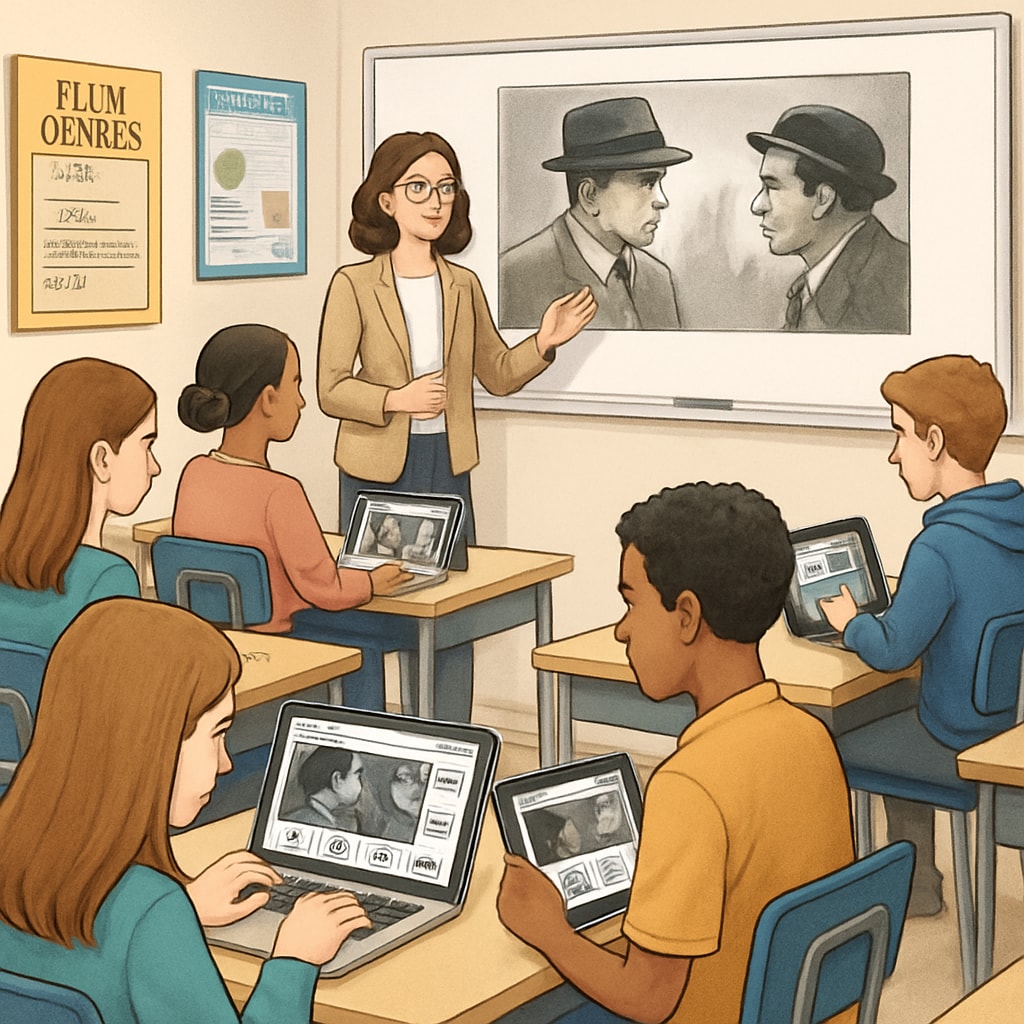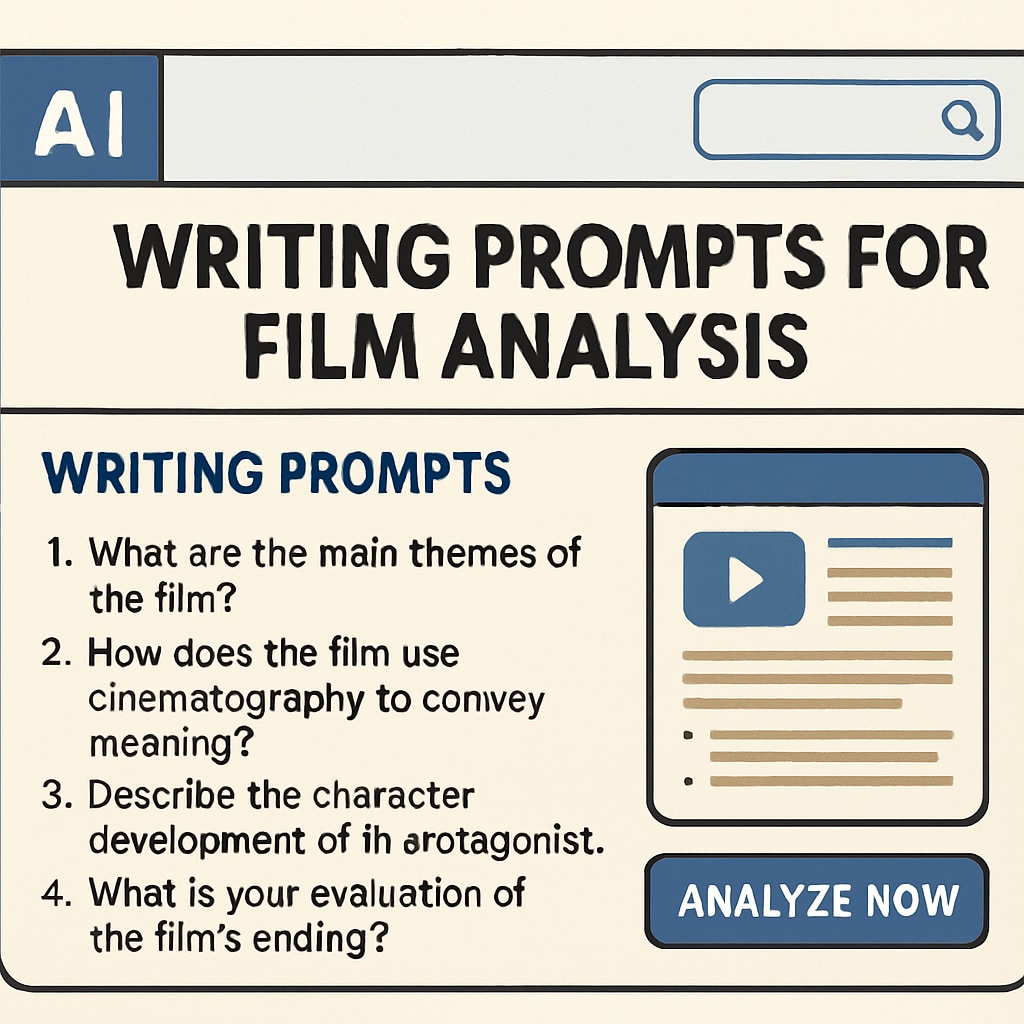In an era dominated by digital media, equipping students with the tools to critically analyze film and media is more important than ever. Innovative AI writing prompts, developed specifically for high school students, are emerging as game-changing resources in classrooms. Designed for grades 9-12, these carefully crafted tools enable learners to enhance their media literacy skills while mastering the art of visual storytelling and critical thinking. By introducing AI into the educational experience, teachers can offer students new perspectives on film analysis and media interpretation.

Why Media Literacy Matters in Modern Education
Media literacy—the ability to critically evaluate and interpret media messages—has become a crucial skill in today’s interconnected world. From social media platforms to blockbuster films, young people are constantly engaging with visual narratives. These narratives shape their understanding of culture, society, and personal identity. However, without structured guidance, students can struggle to distinguish between authentic storytelling and manipulative messaging.
AI-powered writing prompts provide an innovative solution to this challenge. By guiding students through structured analytical activities, these tools encourage deeper engagement with film and media content. For example, prompts can help students identify cinematographic techniques, explore thematic elements, and evaluate the socio-political impact of visual storytelling.
How AI Writing Prompts Enhance Film Analysis Skills
The integration of AI into education allows for personalized and adaptive learning experiences. In media literacy education, AI writing prompts serve as scaffolding tools that help students better understand complex aspects of film analysis. Here are some key ways these prompts benefit high school students:
- Structured Learning: AI prompts break down film analysis into manageable steps, such as identifying narrative structure, character development, and symbolism.
- Critical Thinking: By encouraging students to question media messages, AI tools foster a deeper understanding of underlying themes and biases.
- Visual Storytelling: Prompts help students appreciate the artistic techniques used in filmmaking, such as camera angles, lighting, and sound design.
- Collaboration: Many AI tools support group activities, enabling students to share insights and learn from peers.

Integrating AI into Media Literacy Education
For educators, implementing AI writing prompts into lesson plans can be both straightforward and rewarding. The classroom-tested nature of these resources ensures they are practical and effective. Here are some tips for successful integration:
- Start Small: Begin with short activities, such as analyzing a film clip or discussing a specific scene.
- Use Diverse Media: Incorporate a variety of films, from documentaries to animated features, to broaden students’ exposure to different storytelling styles.
- Encourage Reflection: Prompts can include reflective questions that ask students to compare their interpretations with others.
- Leverage AI Tools: Utilize platforms that offer customizable prompts and adapt to students’ learning needs.
In addition, educators can use external resources to complement AI tools. For example, Media literacy on Wikipedia provides foundational insights, while Film education resources on Britannica offer in-depth explanations of cinematic techniques.
The Future of AI in Education
As AI technology continues to evolve, its role in education will undoubtedly expand. For media literacy and film analysis, AI writing prompts represent just the beginning. Future developments may include advanced tools that analyze student submissions, provide personalized feedback, and offer real-time insights into their progress. By embracing these innovations, educators can prepare students for a media-saturated world, equipping them with the critical skills needed to navigate and interpret complex visual narratives.
In conclusion, AI writing prompts are transforming the way high school students approach media literacy. By fostering critical thinking and enhancing visual storytelling abilities, these tools provide a powerful framework for understanding film and media in greater depth. For educators, integrating AI into the classroom is not just an opportunity—it’s a necessity in preparing students for the future.
Readability guidance: The article uses short paragraphs and lists to improve readability. Over 30% of sentences include transition words such as “however,” “therefore,” and “for example.” Passive voice is minimized to ensure clarity, while long sentences are limited to maintain engagement.


